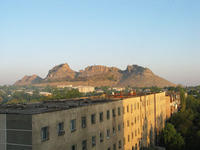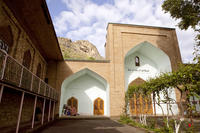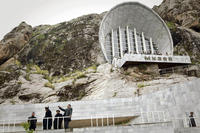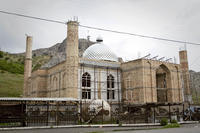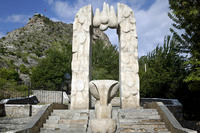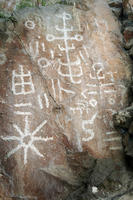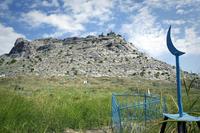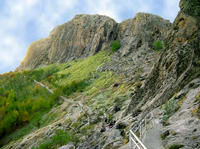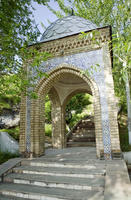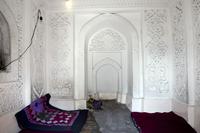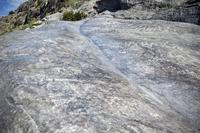You are in: Asia -> Kyrgyzstan -> Sulaiman-Too Sacred ... , and traditional search or Image Gallery will yield results of this site only
Sulaiman-Too Sacred Mountain
| Site number: | 1230 |
|
| Type of site: | Cultural | |
| Date: | - | |
| Date of Inscription: | 2009 | |
| Location: | Asia, Kyrgyzstan, Fergana Valley, City of Osh | |
Up to 75 images are shown here. Click on each for more details or on Image Gallery for more images.
| Description: | "Sulaiman-Too Sacred Mountain Kyrgyzstan dominates the Fergana Valley and forms the backdrop to the city of Osh, at the crossroads of important routes on the Central Asian Silk Roads. For more than one and a half millennia, Sulaiman was a beacon for travellers revered as a sacred mountain. Its five peaks and slopes contain numerous ancient places of worship and caves with petroglyphs as well as two largely reconstructed 16th century mosques. One hundred and one sites with petroglyphs representing humans and animals as well as geometrical forms have been indexed in the property so far. The site numbers 17 places of worship, which are still in use, and many that are not. Dispersed around the mountain peaks they are connected by footpaths. The cult sites are believed to provide cures for barrenness, headaches, and back pain and give the blessing of longevity. Veneration for the mountain blends pre-Islamic and Islamic beliefs. The site is believed to represent the most complete example of a sacred mountain anywhere in Central Asia, worshipped over several millennia." --WHMNet paraphrase from the description at WHC Site, where additional information is available. | |
| The Sulayman Mountain (also known as Taht-I-Suleiman, Sulayman Rock or Sulayman Throne) is the only World Heritage Site in the country of Kyrgyzstan. It is located in the city of Osh and was once a major place of Muslim and pre-Muslim pilgrimage. The rock rises abruptly from the surrounding plains of the Fergana Valley and is a popular place among locals and visitors, with a splendid view. Sulayman is a prophet in the Qur'an, and the mountain contains a shrine that supposedly marks his grave. Women who ascend to the shrine on top and crawl though an opening across the holy rock will, according to legend, give birth to healthy children. The trees and bushes on the mountain are draped with numerous "prayer flags", small pieces of cloth that are tied to them. According to the UNESCO, the mountain is "the most complete example of a sacred mountain anywhere in Central Asia, worshipped over several millennia" The site is still a popular place for local Muslims, with stairs leading up to the highest peak where there stands a small mosque originally built by Bobur in 1510 and much reconstructed in the late 20th century. The rock also contains a museum that was carved during the Soviet era, showing archeological findings from the area and its history. The lower slope of the mountain is surrounded by a cemetery. --Wikipedia. Text is available under the Creative Commons Attribution-ShareAlike License. | ||
| Source: | http://whc.unesco.org/en/list/1230 | |
| Reference: | 1. UNESCO World Heritage Center, Site Page. | |


